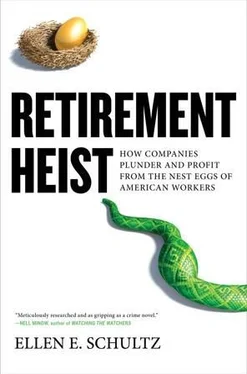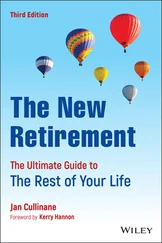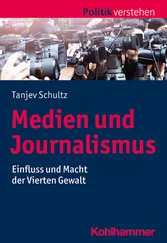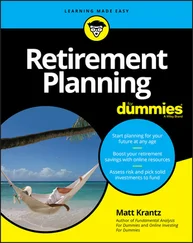What was really happening: McDonnell Douglas would be paying for the additional coverage—using pension assets—for four years. After that, well, the retirees would pick up 100 percent of the costs (with their premiums being subtracted from their pensions). McDonnell maintained in his letter that this plan, which supposedly would enable retirees to continue their benefits “without denting your pocketbook,” would save the company millions. In fact, McDonnell Douglas’s pump-and-dump maneuver gave it a pretax gain of $698 million. Without the gains from cutting retiree medical benefits, the company would have had a loss for the year. Companies could take the gains all at once, even if the cuts wouldn’t take effect until later; the bigger the bath, the bigger the pile of gains.
CFOs and consultants didn’t call attention to this, and most analysts were oblivious to the way non-cash gains from benefits plans were enhancing income. But one prescient observer, Jack Ciesielski, an independent accounting analyst in Baltimore, warned in a 1994 client newsletter that the new rules gave employers an incentive to inflate their liabilities. “Companies that were the most adversely affected may have made the most dire assumptions in setting up their postretirement benefits liabilities—and thus have the largest ‘reserves’ to call upon should they need a little earnings help in the next economic downturn,” he wrote. “It’s programmed-in earnings improvement…. By bulking up their assumptions, they created a piggy bank of earnings improvers.”
McDonnell Douglas illustrates another key difference between pensions and retiree health plans. While federal law dictates that companies can’t cut pensions that have already been earned, this is not the case for health plans. Unless the benefits were protected by a union contract (and sometimes not even then), companies could pull the plug on benefits that employees, including retirees, had already earned.
McDonnell Douglas’s profits came at the cost of thousands of retirees like Robert Taylor, who joined the company shortly after the Second World War and retired in 1979. He died four years later, at age seventy-nine, just when the company started passing the costs on to the retirees. As the company phased out its share of the coverage, the retirees’ share grew, until they were paying 100 percent of the costs. Rhada Taylor, Robert’s widow, continued to get the coverage, which supplemented Medicare and covered such things as prescription drugs. Initially, the premium she paid for this was $168. As is common practice, the company deducted the ever-increasing premium from her widow’s pension of $420 a month. The premiums increased bit by bit each year, and by 2000 her pension had disappeared altogether, leaving her with only a Social Security check of $1,009 a month to live on.
R.R. Donnelley, a printing company based in Chicago, dispatched a similar letter to its retirees in October 1992, also blaming “skyrocketing” health-care costs and FAS 106: “We have another problem—a new accounting rule we must use, beginning in 1993. This of course has a serious negative impact on our earnings.” Regretfully, the company began to charge retirees for their once free health care, “to remain competitive.” That last part was true: It remained competitive with the other companies that were cutting retiree health coverage.
While some companies like McDonnell Douglas chose to report all of its gains in a single year, R.R. Donnelly took the more common approach and spread them over several years. Donnelley’s gains were fed into income throughout the nineties.
Few noticed that companies were gaming the system, and people who pointed it out didn’t score any points with private industry. Jeffrey Petertil had been an adviser to the accounting-board task force that drafted the new rule, and he wasn’t happy with the outcome. “FAS 106 not only overstates the value of future retirees’ health benefits, but its complexity presents another hazard,” he wrote in a 1992 editorial in The Wall Street Journal . “The value a company assigns to future health benefits can be wrong, whether by mistake or by design, and nobody will much know. The FASB rule leaves loopholes that let a company reduce or increase cost almost as it wishes. One reason there has been little outcry, considering its estimated financial impact, is that some consultants and managers know that by making minor changes to the plans they can greatly reduce the FASB cost.”
He also pointed out something that ought to have been obvious: Employers could make their retiree health liabilities go away. “There is a question of whether there is a liability at all,” he wrote. “Many companies extend health benefits to retirees but change them often. Recent court cases indicate that the employers’ right to change or terminate the benefit will be upheld.” Within twenty-four hours of the editorial’s publication, his largest client, a Big Six accounting firm, fired him.
Defense contractors and public utilities had an additional incentive to inflate their obligations, because they could use the high figures to ask for more money in their government contracts or to ask utilities commissions for rate increases to offset the cost of the benefits. Pacific Gas & Electric reported a large liability in 1993, then asked the California Public Utilities Commission for permission to raise rates to cover its retiree health costs. It obtained a $181 million rate increase that year. But PG&E then reduced what it would pay for benefits and cut its workforce by 17 percent. By 1999 it had reduced its annual retiree-benefits expense by 90 percent.
California ratepayer advocates ultimately caught on and pointed out PG&E’s retiree-liability two-step to the utilities commission. The commission required the company to credit $191 million to ratepayers for the years 1993 through 1995. By the late 1990s, more ratepayer advocates were hiring auditors to review utilities’ requests for rate hikes to pay for retiree health costs. When evaluating a request by New Jersey water utilities for a rate hike, the advocates’ office hired an expert who found that virtually every assumption—health care inflation, mortality rates, salary increases, expected rates of return on the assets, and so on—was unrealistic. The rate board nixed the increases. Similarly, the Massachusetts Attorney General’s Office and the Rhode Island Division of Public Utilities and Carriers, an agency that represents consumers, hired a consultant to conduct an audit of New England Electric System’s retiree health costs. The auditors determined that ratepayers had overpaid for the benefits, and the utility was forced to refund $20 million.
The giant liabilities that companies reported for retiree health care also had a powerful effect on the courts. Unisys, like many other companies in the late 1980s and 1990s, promised lifetime, company-paid health coverage to older employees as an inducement to get them to retire. Albert Shaklee was one of thousands of Unisys career employees who took the deal. But the coverage didn’t last long. In October 1992, Unisys sent a letter to 25,000 former employees saying that because of “increasing medical costs and growing worldwide competition” the company would shift 100 percent of the cost of coverage to the retirees over three years. “This new plan will be cost-effective, will provide financial protection against the high cost of illness or injury, and will continue to be available at group rates,” the letter said.
Shaklee, who had moved to Lake Kiowa, Texas, when he retired, hung on to his coverage as long as possible, because his wife, Doris, hadn’t yet hit the Medicare eligibility age of sixty-five and, with a cancer diagnosis, was uninsurable. When his premiums reached $784 a month in 1996, exceeding his $727 monthly pension, he dropped out of the plan. Though he had earned $70,000 a year, in order to get health coverage Shaklee had to take a minimum-wage midnight-shift job at a partsgrinding factory in nearby Gainesville. He was seventy at the time.
Читать дальше












